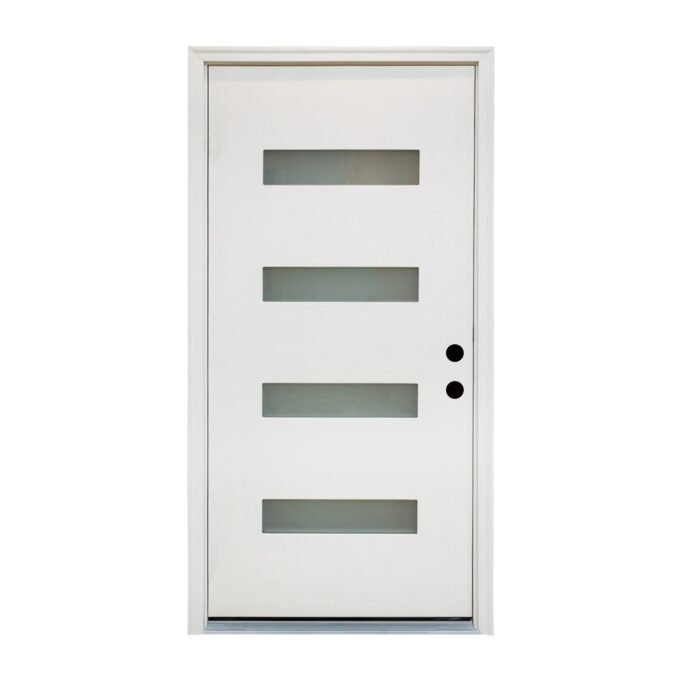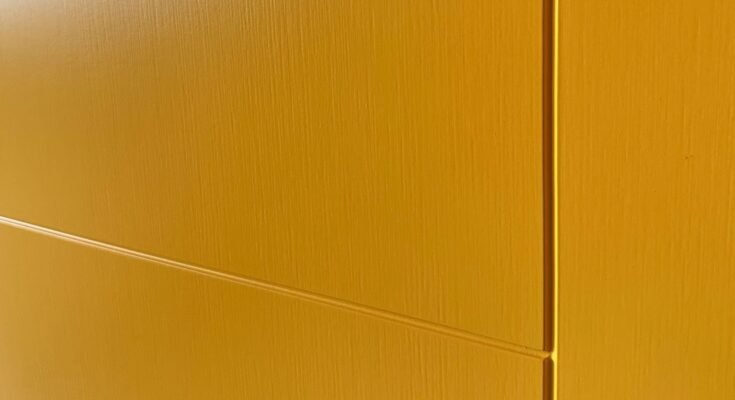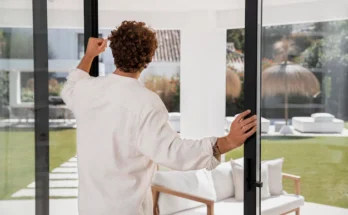Your front door serves as the gateway to your home, making a powerful first impression on visitors while providing essential security and insulation. Contemporary front doors have revolutionized home entryways by combining sleek, modern aesthetics with advanced materials and engineering. These doors reflect current architectural trends that emphasize clean lines, minimalist design, and functional elegance. Whether you’re building a new home or updating an existing property, choosing the right contemporary front door can dramatically enhance your home’s curb appeal and value. Today’s options offer an impressive range of materials, from fiberglass and steel to wood composites and glass, each engineered to withstand the elements while maintaining their stunning appearance. Beyond their visual impact, contemporary doors incorporate cutting-edge technology for improved energy efficiency, security features, and weather resistance. Understanding the available options, materials, and design trends will help you select a door that not only complements your home’s architecture but also meets your practical needs for durability, maintenance, and long-term performance.
Introduction to Contemporary Front Doors
Contemporary front doors represent a distinct design philosophy that prioritizes simplicity, functionality, and visual impact. Unlike traditional doors with ornate detailing and classical motifs, contemporary designs embrace clean geometric lines, smooth surfaces, and intentional negative space. These doors often feature asymmetrical layouts, horizontal or vertical accent panels, and strategic use of glass to create striking focal points. The contemporary aesthetic aligns perfectly with modern architecture, mid-century homes, and minimalist design approaches. Materials play a crucial role in achieving the contemporary look, with many doors incorporating mixed elements like wood combined with metal accents or frosted glass panels set within solid frames. The color palette typically leans toward bold statements—crisp whites, deep blacks, natural wood tones, or dramatic accent colors that contrast with exterior finishes. This design approach transforms the entryway into an architectural statement rather than simply a functional necessity.
Benefits of Contemporary Front Doors
Contemporary front doors deliver exceptional value through their combination of aesthetic appeal and practical performance. Their clean, streamlined designs create an immediate visual impact that elevates your home’s exterior, often becoming the defining architectural feature of the façade. This enhanced curb appeal translates directly into increased property value, making contemporary doors a smart investment for homeowners. Beyond aesthetics, these doors excel in energy efficiency through advanced weatherstripping, insulated cores, and precision engineering that minimizes air infiltration. The materials used in contemporary construction—whether reinforced fiberglass, insulated steel, or engineered wood—offer superior durability compared to older door styles, resisting warping, cracking, and fading even in harsh climates. Security features have also advanced significantly, with many contemporary doors incorporating multi-point locking systems, reinforced frames, and impact-resistant materials that provide peace of mind. The low-maintenance nature of modern materials means less time spent on upkeep and refinishing, while UV-resistant finishes preserve color and appearance for years. Additionally, the versatility of contemporary design allows these doors to complement various architectural styles, from ultra-modern homes to updated traditional residences seeking a fresh, current look.

Key Features to Look For
Selecting the right contemporary front door requires careful consideration of several critical features that impact both performance and aesthetics. Energy efficiency should top your priority list—look for doors with insulated cores, typically featuring polyurethane or polystyrene foam that provides excellent thermal resistance. Check the door’s U-factor rating, which measures heat transfer; lower numbers indicate better insulation, with quality contemporary doors achieving U-factors between 0.15 and 0.30. Weatherstripping quality matters tremendously, as even the most beautiful door becomes problematic if it allows drafts or moisture penetration. Examine the seal system around all edges, ensuring it uses compression weatherstripping that creates an airtight barrier when closed. Security features deserve equal attention—multi-point locking mechanisms that engage the frame at three or more points offer significantly better protection than single-point locks. Consider doors with reinforced strike plates, heavy-duty hinges, and solid cores that resist forced entry. Glass elements, while visually stunning, should incorporate tempered or laminated safety glass that won’t shatter into dangerous shards. For privacy without sacrificing natural light, frosted, textured, or decorative glass options provide the perfect balance. The door’s construction quality reveals itself in details like through-bolted hinges rather than surface-mounted hardware, precisely fitted panels without gaps, and factory-applied finishes that penetrate deeply into materials. Threshold design impacts both accessibility and water resistance—look for adjustable thresholds that accommodate slight settling while maintaining proper seals. Finally, consider the door’s warranty coverage, as manufacturers confident in their products typically offer comprehensive protection spanning ten to twenty years on materials and finish.

Popular Materials for Contemporary Front Doors
The material you choose for your contemporary front door fundamentally determines its performance, maintenance requirements, and longevity. Fiberglass has emerged as a leading choice, offering exceptional durability with minimal upkeep while convincingly mimicking the appearance of natural wood through advanced texturing and grain patterns. These doors resist denting, warping, and cracking, perform well in extreme temperatures, and can be stained or painted to achieve virtually any aesthetic. Manufacturers like Framewell have developed fiberglass door technologies that combine realistic wood-grain textures with superior insulation values, making them particularly appealing for homeowners seeking both beauty and performance. Steel doors provide unmatched security and affordability, featuring insulated cores that deliver outstanding energy efficiency. Modern steel construction has overcome earlier rust concerns through galvanized coatings and durable factory finishes available in smooth or textured profiles. For those seeking authentic beauty, solid wood doors crafted from mahogany, oak, or walnut create stunning focal points with rich natural character, though they require more maintenance including periodic refinishing to protect against moisture and UV damage. Engineered wood composites blend wood fibers with resins to create stable, warp-resistant alternatives that maintain wood’s aesthetic appeal while reducing maintenance demands. Aluminum-framed doors with large glass panels have gained popularity in contemporary design, offering sleek, industrial aesthetics with excellent structural integrity and corrosion resistance. Glass elements themselves range from clear to frosted, textured, or even smart glass that adjusts transparency electronically. Each material brings distinct advantages—consider your climate, budget, desired maintenance level, and aesthetic preferences when making your selection.
Design Trends in Contemporary Front Doors
Current design trends in contemporary front doors emphasize bold visual statements that reflect evolving architectural preferences. Oversized doors reaching eight or nine feet tall create dramatic entrances that amplify the sense of grandeur and openness, particularly effective in modern homes with high ceilings. Minimalist hardware has become increasingly popular, with concealed hinges, flush-mounted handles, and streamlined locksets that maintain clean lines without visual interruption. Mixed material combinations generate visual interest—think wood panels accented with metal inlays, or solid surfaces punctuated by strategically placed glass sections that allow natural light while maintaining privacy. Pivot doors represent a significant trend shift, rotating on a central or offset axis rather than traditional side hinges, creating a striking architectural moment with each opening. Color choices have grown bolder, with matte black emerging as the dominant trend, followed by deep charcoal, rich navy, and warm natural wood stains that contrast beautifully with lighter exterior palettes. Horizontal and vertical accent grooves add dimensional depth to otherwise smooth surfaces, creating shadow lines that enhance visual appeal. Sidelights and transom windows increasingly feature geometric patterns, frosted glass, or minimalist grids that complement the door’s contemporary aesthetic while flooding entryways with welcoming natural light.
Maintenance and Longevity
Proper maintenance significantly extends the life and appearance of contemporary front doors, though requirements vary considerably by material. Fiberglass and steel doors demand minimal attention—simply wash them several times yearly with mild soap and water to remove dirt and pollutants, then inspect weatherstripping for wear and lubricate hinges and locks annually. Wood doors require more dedicated care, needing inspection every six months for finish deterioration, with refinishing typically necessary every three to five years depending on sun exposure and climate conditions. Apply quality exterior wood sealant or paint to protect against moisture infiltration and UV damage. Glass panels benefit from regular cleaning with streak-free glass cleaner to maintain clarity and visual impact. Check and replace weatherstripping when you notice drafts or visible compression damage, as this inexpensive maintenance prevents energy loss and moisture problems. Tighten hardware periodically, as daily use can gradually loosen screws and bolts. Most contemporary doors, when properly maintained, easily last twenty to thirty years, with fiberglass and steel options often exceeding this timeframe while wood doors may require more frequent refinishing but can last generations with dedicated care.
Making the Right Choice for Your Home
Investing in a contemporary front door transforms your home’s entrance into a stunning architectural statement while delivering practical benefits that extend far beyond aesthetics. The combination of modern design principles, advanced materials, and innovative engineering creates doors that excel in energy efficiency, security, and weather resistance. Whether you choose the low-maintenance durability of fiberglass, the robust protection of steel, or the timeless beauty of natural wood, today’s contemporary doors offer solutions tailored to every climate, budget, and architectural style. Current design trends emphasizing clean lines, bold colors, and mixed materials ensure your entryway remains visually relevant for decades. By carefully evaluating key features like insulation ratings, locking mechanisms, and weatherstripping quality, you can select a door that performs exceptionally while requiring minimal upkeep. The longevity of contemporary doors, often spanning twenty to thirty years or more with proper care, makes them a wise investment that enhances curb appeal, increases property value, and provides daily satisfaction every time you arrive home. Your front door deserves the same thoughtful consideration as any major home improvement, and contemporary options deliver the perfect balance of style and substance.




